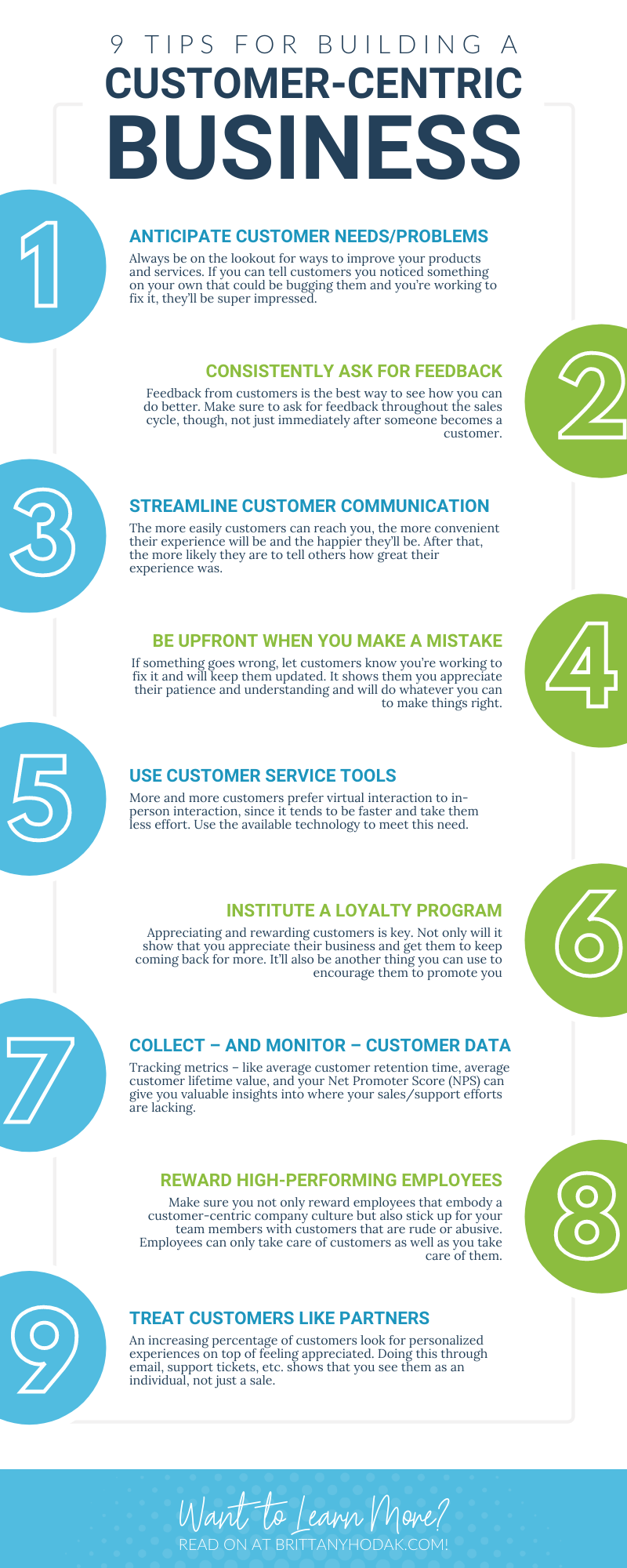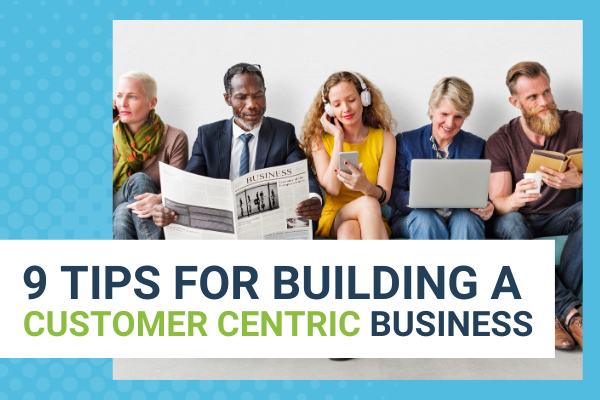It’s hard to argue with the concept that a customer-centric business stands out against the competition and builds strong, long-term relationships with audiences. Yet, at the end of the day, so many businesses fail to take the courageous step towards being fully customer-first.
The reality is that if you want to build a customer-centric business, you need to make this a commitment across your entire business. Customer service and experience don’t exist inside a one-size-fits-all box. Your customers need to come first in every decision across every stage in the funnel and every team. It’s about so much more than having a strong support staff and creating content for customers (though this is an important first step).
With that in mind, what does it really mean to be customer-centric? In short, all aspects of your brand need to be geared towards your customer’s needs, from initial marketing efforts to ongoing, long-term support. In other words, this is a proactive, enthusiastic approach that reduces tension at all stages to avoid problems in the first place.
If you’re ready to take your business to the next level, here are 9 tips for building a customer-centric business in this competitive landscape. While not all of the ideas below will be the right fit for your brand, most are a no-brainer in today’s world.
Anticipate customer needs (and problems).
First, you need to always be on the lookout for the best ways to improve your products and services. Too many brands wait until customers come to them with problems when it should always be the other way around.
If you can tell customers you’ve noticed an issue and you’re already working to fix it, they’ll notice this attention to detail. Again, it’s about being proactive, not reactive. When you understand customers’ needs, you keep them around longer. It’s proven that increasing your customer retention rates by as little as 5% increases your profits by more than 25%.
To see this in action, look at Trust & Will. This is an easy online estate planning tool that takes a process that should be complicated (creating your own will and estate plan) and makes it easy for the average user. How do they do this? They anticipate the needs of their specific audience, adapting the step-by-step tool to them and their goals.
With expert help each step of the way, straightforward language, and affordable pricing, they make it possible for anyone to create a legal will in minutes. Trust & Will stands out because they understand their audience deeply, and they take the time to be proactive towards their needs (rather than reactive).
Consistently ask customers for feedback.
Next, always ask for feedback. It’s easy to think customer feedback is one-and-done. If you ask for feedback once, do you really need to ask for it again? The simple answer is always yes.
Feedback from your existing customers is the best way to see how you can do better. Feedback should be a part of your entire sales cycle, not just immediately after someone makes a purchase. Check in consistently to make sure you’re doing the best you possibly can.
According to Pew Research Center, 38% of customers never leave reviews on products and services, but up to 68% will if you ask them to. This has big potential for your existing offerings. The hotel brand Hyatt is a great example of a brand that isn’t afraid to ask for feedback long-term. Not only do they ask customers for feedback immediately after a stay, but they also monitor their social media profiles for thoughts, ideas, and updates about their properties.
Streamline communication for customers.
Along those lines, how easily can customers reach you? When customers have to jump through hoops just to talk to a real person, they’re only going to grow more and more frustrated. The more convenient it is to reach your team, the more likely this will be a positive experience. As of 2022, customers are 2.4x more likely to keep doing business with a company when they receive prompt or quick support with their problems.
The drinkware retailer Yeti is the perfect example of a brand that makes it easy for customers to communicate with their team. Their website contact page leads to helpful guides, shipping information, product registration, and more. If that doesn’t cover one customers’ needs, they offer around-the-clock support through multiple channels.
Be upfront when you make a mistake.
Though it’s hard to make peace with this fact sometimes, mistakes happen. No brand is perfect, and sometimes things go wrong. If (and when) this happens, it’s important to take the initiative to let customers know you’re on top of it. Staying transparent and upfront helps your customers feel heard and understood when it matters most.
Always show your customers that you appreciate their patience and understanding. With a reported 70% of the customer’s journey dictated by how they feel they’re being treated, it’s important to include them in any steps you take to improve the experience.
A mistake can be an opportunity for growth. By taking these moments as a chance to reconnect with your customers and turn an experience around, you have the chance to transform a passive user into a superfan who is invested in the growth of your brand. Just check out this email from Issuu, an online publishing platform. Though they made a mistake with their first round of communications, they used their “oops” message as a chance to reconnect with existing customers.
Use customer service tools where possible.
Another key part of building a customer-centric business is to always use customer service tools when possible. While in-person customer service interactions will always have an important place within the overall experience, it shouldn’t be your go-to option for most customers. More than 6 out of 10 US consumers prefer to use self-serve tools when it comes to inquiries.
Self-serve tools could refer to online chat, help guides, chatbots, or other digital solutions that reduce the need for calls, emails, and in-person support. Not only does this get the customer their answer faster, but it also takes less effort both for you and the user. It’s a win/win for everyone, and worth the upfront investment.
The Sill, an online houseplant retailer, uses customer service tools and resource libraries to help their customers handle basic questions. Because they understand that owning a houseplant is a big responsibility, their Care Library includes everything newbie plant owners need to get started without stress. Though they offer live chat support and email help, most concerns can be handled without needing to contact an agent.
Institute a loyalty program if you haven’t already.
Next, every customer-centric business needs a loyalty program. Appreciating and rewarding existing customers is always important. Not only does this show them that you appreciate their business, but it keeps them coming back again and again. A loyalty program can also boost your referrals, an important KPI for any brand.
Did you know it’s 5 to 25 times more expensive to acquire a new customer compared to keeping a current one? This means it’s actually more affordable to implement a loyalty program vs. investing in new marketing and growth strategies.
To see the power of loyalty programs in action, look at Hungryroot. This food delivery service helps customers eat healthier by pairing them with weekly meals, recipes, and groceries by mail. Existing customers have a lot of loyalty perks like special deals and recipes, but the real excitement is in their referral program.
For each friend who signs up for grocery delivery, Hungryroot users get a $40 credit added to their own accounts. This encourages customers to be loyal to this brand while sharing it with their friends and family.
Collect – and pay attention to – customer data.
Additionally, customer data is one of the most valuable assets of any brand. As the saying goes, knowledge is power, and this is even true for your customer-centric business strategy. Tracking metrics like your average customer retention time, customer lifetime value, referral rate, and NPS give you valuable insights into your sales and support efforts.
Not only will you learn where you’re succeeding, but you’ll also recognize where you can improve. No brand is perfect, but if you don’t know where to go, you’ll never get there. An example of a company that was able to use customer data to improve is the fast-casual restaurant chain Chipotle.
Though Chipotle faced a lot of backlash around health concerns, resulting in the loss of loyal customers and their overall customer lifetime value, they had quite the comeback. All it took was listening to their customer data and what they wanted from their brand. By investing in real, local ingredients and a marketing campaign based on transparency, Chipotle learned from their customer data to come back stronger than ever.
Reward high-performing employees.
Additionally, don’t just reward your best customers. Also reward your best employees. If you wish to embody a customer-centric company culture, you need to also stand up for your team members when it matters most. Your employees can only take care of customers as much as you’re able to take care of them.
A reported 73% of customers fall in love with a brand and stay loyal because of friendly customer service representatives. When you invest in your employees and their success, they feel empowered in their day-to-day roles. They essentially become superfans in their own right, building their own excitement around the company.
The Walt Disney World is one of the best examples of a company that builds employee recognition into its customer-centric practices. With over 180 different employee recognition programs, it’s important that those who go above and beyond with their service are highlighted within their teams. Disney values employee recognition so much that they even have dedicated Twitter accounts that allow guests to shout out top-performing cast members.
Treat your customers like partners, not numbers.
Last but not least, if you want to create a customer-centric business, you need to recognize your customers as the individuals they are. They’re not just numbers on a sales page. They’re real-life partners in your business. More and more customers value personalized experiences, and they want to feel appreciated.
By creating positive, personal experiences through email, phone conversations, support tickets, and marketing content, you’re honoring your customers as real people, not sales numbers. With 77% of customers saying they’ll recommend a brand after a positive experience, you can’t afford not to personalize each encounter.
Lastly, let’s look at an example of a company that isn’t afraid to put customers first. Lemonade is reimagining the world of online insurance, and they focus every step of the process on individuals. Not only is their process as clear as possible. They also let customers donate unpaid claims to the charity of their choice. Not only is help available 24/7, but they personalize each insurance plan to the individual’s needs.
Is Your Business Customer-Centric?
Ultimately, in a perfect world, all brands would be customer-centric. While many consistently try to appeal to their audience, they consistently fail when it comes to real-world impact. Luckily, the solution is simple. By creating a business that puts customers (and employees) first, you create a brand built on authenticity, not sales numbers.
Using these 9 tips above, build a brand that’s ready for the new era of customer experience. It’s no longer enough to create an average service experience. It’s now essential that your customers feel heard, valued, and appreciated every step of the way if you want to build lifelong superfans.

